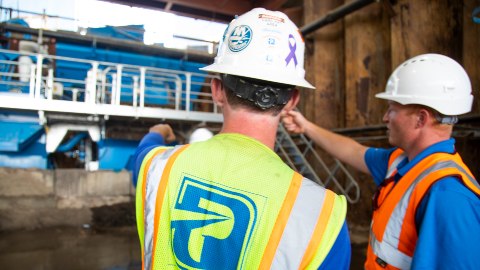
The industry standard solution for the removal of solids from liquid wastes in-situ.
The D:MAX has been delivering for utilities and contractors for over 15 years. It can be applied to process a variety of materials including:
- Lagoon / Pond Emptying Solids
- Storm Screenings
- AD Settled Residues
- Tank Cleanout Residue
- Municipal Solids
Reduces Operational Costs
Carbon footprint and transport costs are reduced with the D:MAX as it can be easily moved around a number of sites if required, facilitating processing in-situ at a variety of locations. This minimises the transport movements required to bring waste material to a processing site and recovers 80% of grit meaning less waste to dispose of. Operations are accelerated by separating waste solids from liquid on site rather than transporting all waste off site.
Reduced solids passing through pumps, tanks and cyclones reduces wear and the requirement for unnecessary maintenance. Grit, sand and plastics are removed in the pre-treatment stage, maintaining capacity in tanks further down the treatment line for biomass power generation.
Return on Investment
The D:MAX produces a dewatered grit product suitable for a variety of further applications. This material can represent up to 90% of the total waste; recovery of this material alone has a huge impact on the volumes of waste to be sent to landfill.
This dewatered grit from the D:MAX creates new markets for classified and dewatered products. Legislation from Environmental Agencies has designated classified and dewatered grit as a ‘Low Risk Waste’ therefore allowing its use on a range of construction projects. Classified grit material can also be sold to the agricultural market.


Efficient Mobile Screening
The D:MAX system can adapt to accommodate surges of rag or grit and variation in feed material so requires less intervention from operators.
Maximum solids removal and dewatering of the grit & rag material means minimum waste volumes and D:MAX ensures the waste going to landfill is now drier and easier to manage. The pre-treatment of waste prior to disposal is a requirement from many global landfill directives and the introduction of the D:MAX ensures all requirements are exceeded in terms of the level of treatment afforded to the feed material.





